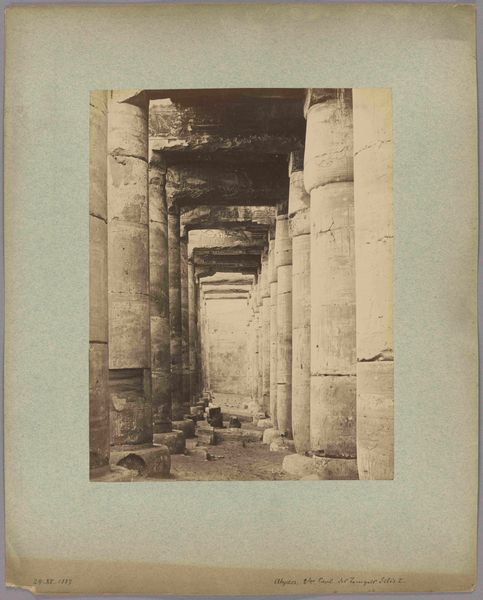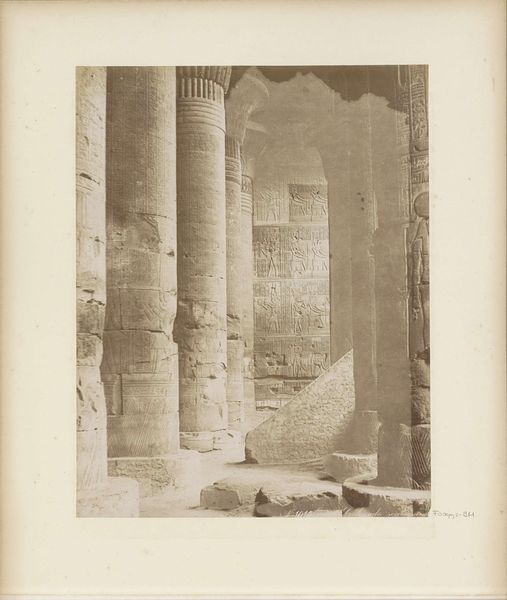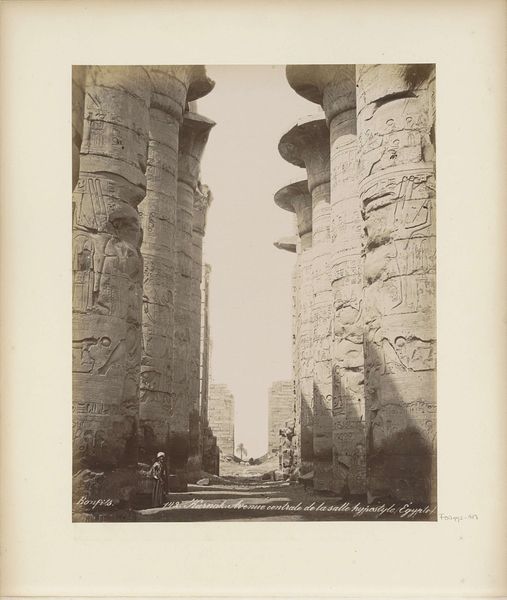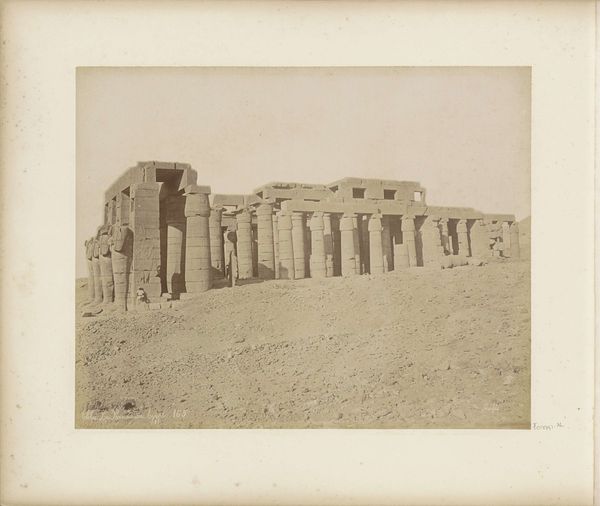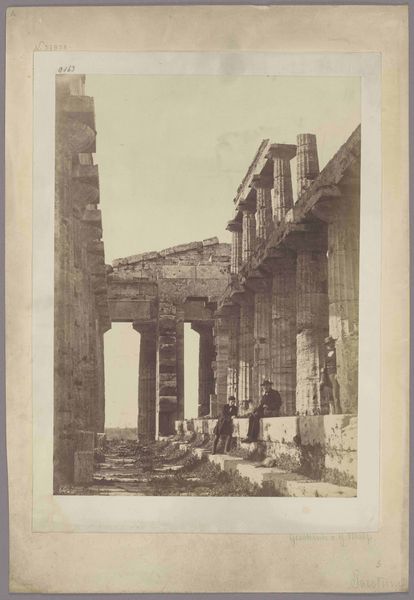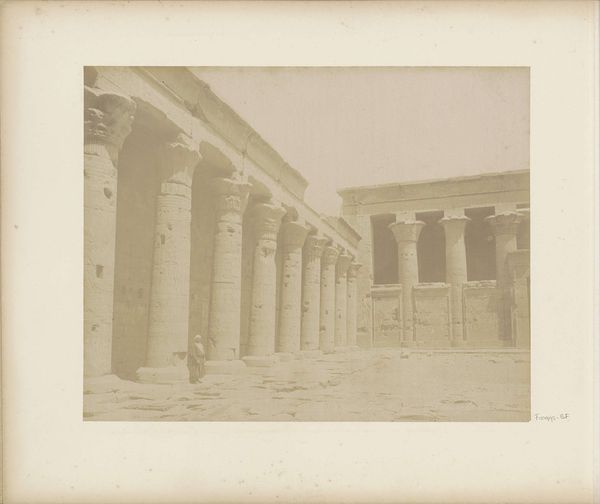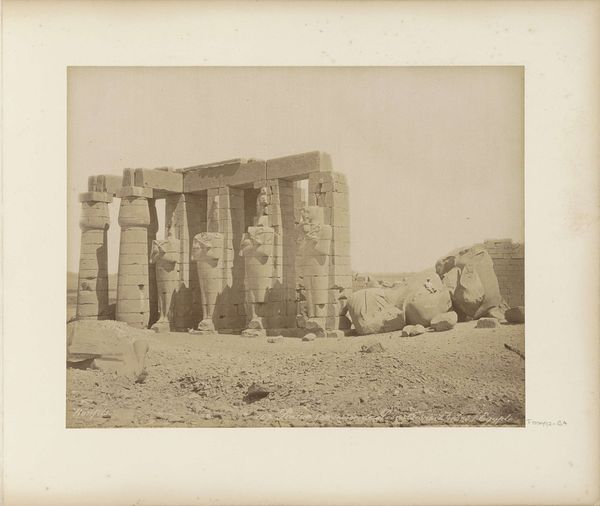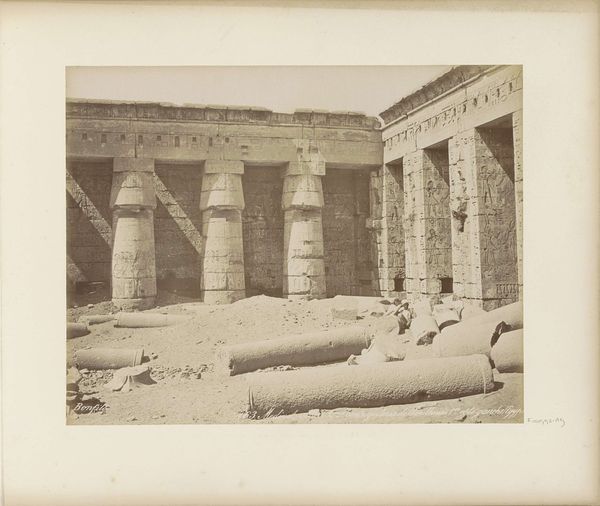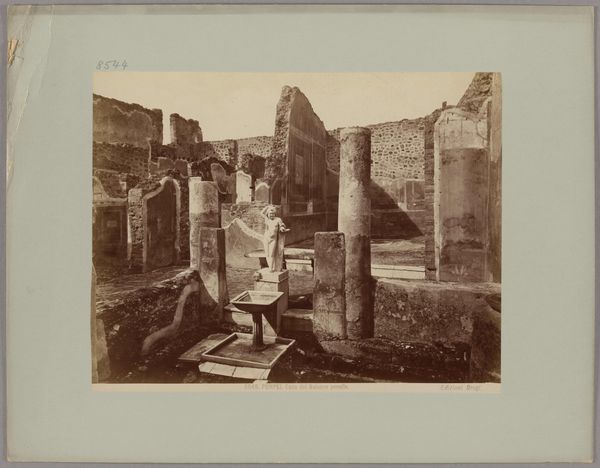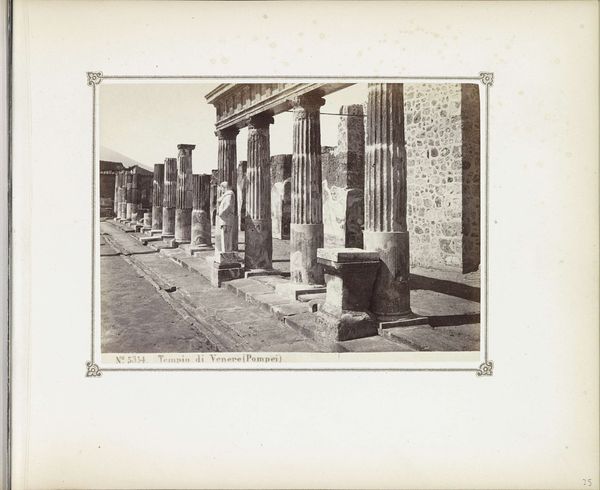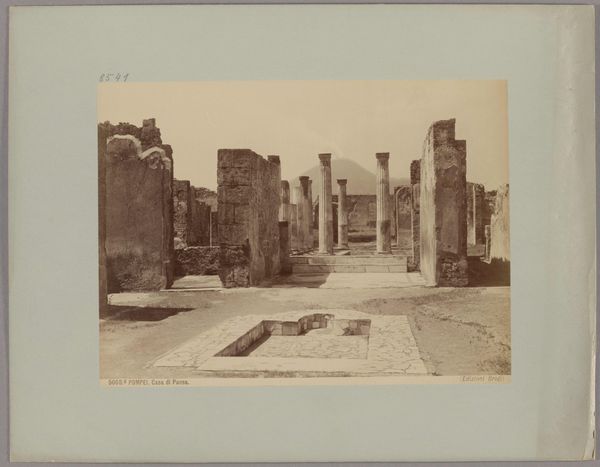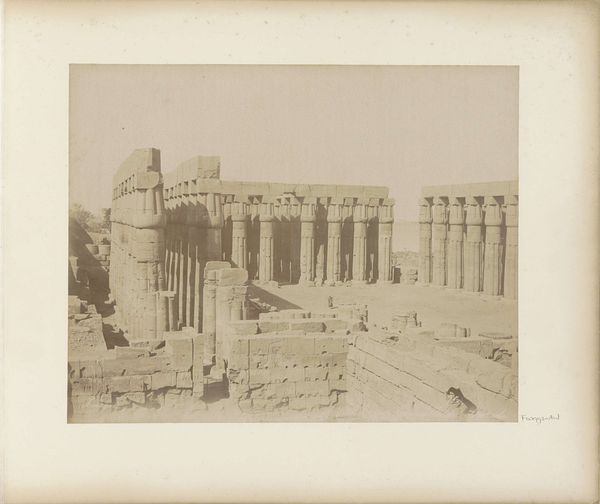
Abydos_ Temple of Sethi I., Columns of the Second Hall, No. 158bis c. 1870 - 1880
0:00
0:00
albumen-print, paper, photography, albumen-print, architecture
#
albumen-print
#
landscape
#
ancient-egyptian-art
#
paper
#
photography
#
ancient-mediterranean
#
albumen-print
#
architecture
Copyright: Public Domain
Editor: This photograph, "Abydos, Temple of Sethi I., Columns of the Second Hall, No. 158bis," taken between 1870 and 1880 by Pascal Sébah, presents a seemingly endless row of massive columns. They’re really striking. What’s your take on why this image endures, given the era in which it was made? Curator: Well, consider the late 19th century fascination with documenting and, in a sense, possessing the past, particularly in places like Egypt. This albumen print isn’t just a landscape or architectural study, but a product of Western engagement with ancient cultures. How do you think the museum as an institution, both then and now, plays a role in shaping our understanding of such a photograph? Editor: I suppose the museum validates its historical significance and filters its meaning for the public. Does that validation risk romanticizing a colonial perspective, perhaps overshadowing the complex political landscape of the time this was taken? Curator: Precisely! Photography became a tool for European powers to survey and classify other cultures, contributing to a visual archive that legitimized their influence. Sébah was a Levantine photographer of Armenian descent. His positioning is quite interesting considering Egypt was experiencing major social transformations during his time, experiencing colonialism and post-colonial independence movements. I would suggest you consider this in order to think through photography, architecture, and the state. Do you agree with that? Editor: Yes, it seems vital to acknowledge this broader political and social context when viewing Sébah's photograph. It challenges a purely aesthetic reading. This also forces me to realize there are layers upon layers that the public must realize when experiencing the arts. Curator: Absolutely. Thinking about photography from these perspectives makes me more cognizant of the photographer as both an interpreter and product of his milieu, and what that says about the larger political landscape of the time. Editor: Thanks! It gives the photo a lot more weight, and provides important contextual detail, especially for the public viewing.
Comments
No comments
Be the first to comment and join the conversation on the ultimate creative platform.
